History
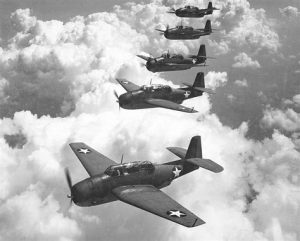 I have always been one to think that there is a logical explanation for everything that happens, but in the case of the Bermuda Triangle, it’s hard to stick to logical thinking, because it doesn’t follow logical lines. Over the past centuries, many ships and air planes have disappeared or met with fatal accidents in the triangular area on Atlantic ocean known as Bermuda Triangle. There are several cases in which no trace of the ships and aircraft were found even after extensive search operations were carried out for hundreds and thousands of square miles in the ocean.
I have always been one to think that there is a logical explanation for everything that happens, but in the case of the Bermuda Triangle, it’s hard to stick to logical thinking, because it doesn’t follow logical lines. Over the past centuries, many ships and air planes have disappeared or met with fatal accidents in the triangular area on Atlantic ocean known as Bermuda Triangle. There are several cases in which no trace of the ships and aircraft were found even after extensive search operations were carried out for hundreds and thousands of square miles in the ocean.
So…what happened to them. Of course, there have been many theories from a black hole to a time warp, but whatever it is, something happens to ships and planes in the Bermuda Triangle. Incidents of disappearances have been documented since the 1600s and continue today. There have been various explanations and theories behind these incidents, but in many cases the incidents are still unexplained.
In one shocking incident in 1945, a whole squadron of five training flights took off from Florida naval base under the leadership of an experienced captain. The planes never returned to the base. No one has come up with an explanation for the disappearance, and in fact, a Martin Mariner flying boat that was sent for the search operation, went missing too. None of these planes was ever heard from again.
In another incident in 1918, a large well known cargo ship went missing in the triangle area without a trace. All of the more than 300 crew members were lost. This was one of the largest lives lost case of disappearances in the Bermuda triangle. And there are many more such incidents. Theories such as methane gas blow out below the ocean causing ships to sink, electronic fog engulfing an aircraft and taking it to unknown zone, hurricanes destroying aircraft, and several other such theories try to explain such cases. They happen randomly, and not even once a year. That said, there is no way to anticipate them. For that reason, we are always shocked when 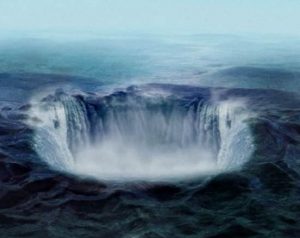 the latest incident happens. Tornado and severe weather warnings exist. We know when hurricanes are coming. We even know when snow or rain storms are coming. Unfortunately, these disappearances, like earthquakes are still very unpredictable. Nevertheless, from Christopher Columbus seeing strange lights and getting strange readings in 1492; to the disappearance of the Patriot, a ship which was carrying Theodosia Burr Alston, the daughter of former US Vice President Aaron Burr disappearing in 1812; to the latest event, the small private twin engine Mitsubishi MU-2B-40 fell victim to the Bermuda triangle on May 15, 2017 while flying from Puerto Rico. across a corner of the triangle to south Florida. The weather was fine, were no warnings…they simply vanished.
the latest incident happens. Tornado and severe weather warnings exist. We know when hurricanes are coming. We even know when snow or rain storms are coming. Unfortunately, these disappearances, like earthquakes are still very unpredictable. Nevertheless, from Christopher Columbus seeing strange lights and getting strange readings in 1492; to the disappearance of the Patriot, a ship which was carrying Theodosia Burr Alston, the daughter of former US Vice President Aaron Burr disappearing in 1812; to the latest event, the small private twin engine Mitsubishi MU-2B-40 fell victim to the Bermuda triangle on May 15, 2017 while flying from Puerto Rico. across a corner of the triangle to south Florida. The weather was fine, were no warnings…they simply vanished.
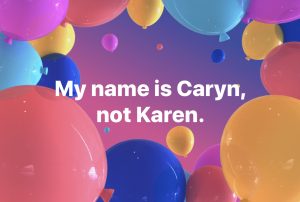 Naming your baby is a big job, and not one to be taken lightly. The name you bless them with, or sometimes stick them with, is very important. Of course whether the name is a blessing or a curse is a matter of opinion. Some people think you should give your children common names, while others don’t want their child to have the same name a dozens of other kids born that year.
Naming your baby is a big job, and not one to be taken lightly. The name you bless them with, or sometimes stick them with, is very important. Of course whether the name is a blessing or a curse is a matter of opinion. Some people think you should give your children common names, while others don’t want their child to have the same name a dozens of other kids born that year.
My parents were of the persuasion that their kids were unique, and so their name should be too. If not in pronunciation, then in spelling. Every one of their daughters’ names are spelled in an unusual way…Cheryl, not Sheryl; Caryn, not Karen; Caryl, not Carol; Alena, not Elena; and Allyn, not Lynn. While our names don’t necessarily sound different, very few people spell them correctly.
In my family there are a number of unusual names. Chantel, Corrie (for a girl), Garrett, Lacey, Keifer, Siara, Shai, Caalab, Aurora, Reece (for a girl), and Jaxx. Some are hard to pronounce and some are hard to spell. Either way, they are all unique. We also have some in my husband’s family that are unique…Corrie and Shai (who are in both sides of the family), Machelle, Weston and Easton (who are brothers), Marlyce, Jala, Kaytlyn, Hattie (it’s making a comeback), and Bowen (which I hadn’t heard before). I guess there are a number of us who like the unique names.
Every year lists come out to tell of the most popular baby names. The celebrities are famous for giving their 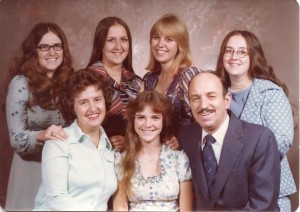 children unique names. Moon, Apple, North are just a few that are easily recalled. Some of them make you wonder just what they are thinking, but apparently they all have their reasons for the unusual names. Names are important as they help to create our identity to the world and to ourselves. Unique Names Day takes a moment in the year to celebrate those who have these interesting names. We are the people who can never find our name on souvenirs, and other personalized items. We have to create our own, have it spelled wrong, or just skip it. We are never on any lists that are produced with all the common names that are out there depicting funny situations applying to names…sometimes that may not be a bad thing.
children unique names. Moon, Apple, North are just a few that are easily recalled. Some of them make you wonder just what they are thinking, but apparently they all have their reasons for the unusual names. Names are important as they help to create our identity to the world and to ourselves. Unique Names Day takes a moment in the year to celebrate those who have these interesting names. We are the people who can never find our name on souvenirs, and other personalized items. We have to create our own, have it spelled wrong, or just skip it. We are never on any lists that are produced with all the common names that are out there depicting funny situations applying to names…sometimes that may not be a bad thing.
Someone, at some point realized that unique names was something of some significance, and Unique Names Day came into being in 1997. Since then it has been a yearly occurrence. There are some things that people with unique names go through that those with common names never think about. As children who want keepsakes with their name on it, visiting a tourist attraction or taking a trip there is rarely an item that people with these names will ever be able to have. While that may seem like a small thing, for a child trying to fit it, it’s a big deal. When there is nothing that they can ever find with their name on it, they feel like they don’t really belong.
Unique Name Day is the perfect chance to embrace those with unique names. Having a day just for those who put up with repeating their names, spelling it, teaching people how to say it and rarely having any of the fun trinkets with their name on may not take away any frustration, but it can help make new memories! Find out is their name from their cultural background? If you are the one who walks through life with a unique name, you  can take this day to revel in your uniqueness. This day can be used to find out the story of how your parents picked this name for you. My own mom liked the name Karen, but didn’t like the spelling, since they wanted their kids to have names beginning with “C” for my mom and “A” for my dad. So, they came up with ways to make the chosen names fit the categories. As for Caryl, I think they liked the “y” in my name and continued it with her. The funny thing about that is just how easy it is for Caryl and me to type our own name when we mean to type the other name…thereby misspelling our own sister’s name. Do you have a unique name? what is your story? This is your day, and your chance to tell the world.
can take this day to revel in your uniqueness. This day can be used to find out the story of how your parents picked this name for you. My own mom liked the name Karen, but didn’t like the spelling, since they wanted their kids to have names beginning with “C” for my mom and “A” for my dad. So, they came up with ways to make the chosen names fit the categories. As for Caryl, I think they liked the “y” in my name and continued it with her. The funny thing about that is just how easy it is for Caryl and me to type our own name when we mean to type the other name…thereby misspelling our own sister’s name. Do you have a unique name? what is your story? This is your day, and your chance to tell the world.
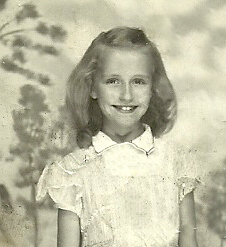 Years ago, my mom, Collene Spencer told me about witnessing a plane crash as a little girl. I wish I had thought to get more information from her then, but at the time, all I could think of was the vision of the crash she told me about, and specifically the airplane in a corkscrew nosedive toward the ground. She said she didn’t hear any engine sounds, and she thought the plane was a piece of paper at first, but then she realized that it was a plane. I didn’t think to ask where she was at the time…whether she was at home or if the family was rock hunting or something. I wish I had asked more questions, back when I had the chance to do so.
Years ago, my mom, Collene Spencer told me about witnessing a plane crash as a little girl. I wish I had thought to get more information from her then, but at the time, all I could think of was the vision of the crash she told me about, and specifically the airplane in a corkscrew nosedive toward the ground. She said she didn’t hear any engine sounds, and she thought the plane was a piece of paper at first, but then she realized that it was a plane. I didn’t think to ask where she was at the time…whether she was at home or if the family was rock hunting or something. I wish I had asked more questions, back when I had the chance to do so.
Rather than asking questions, I began to try to research plane crashes in the area over the years of my mom’s childhood. I had expected it to be an easy search, given all the information on crashes that is out there these days. I was wrong, and by the time I decided that I needed more information from my mom, she was gone. I tried asking my aunts about the crash, but they did not remember it. It’s possible that they didn’t see it, and so they were unable to help me with it.
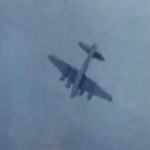
After much research, I have found possibly the only plane crash my mother could have seen at the age she would have had to be…provided she was close to her childhood home when she witnessed the crash. The crash would have been a B-17 bomber on a training maneuver 25 miles north of Casper, Wyoming. The biggest problem with this crash is the 25 mile distance from Casper, but looking north from Casper, you can see a very long way, provided you are near the events center, which could have been a possibility back then. The distance could also explain the lack of engine noise, if the engines were still working as the plane was going down, which is unlikely.
The plane, which crashed on March 3, 1944 was carrying three officers and five enlisted men. There were no survivors in the crash, which is in line with what my mother told me about the crash. The bomber was on a combat training flight, according to Lieutenant Colonel Marcus A. Mullen, station commandant, who said that  the cause of the crash was not yet determined but that a board of officers had been named to investigate. The dead were later identified as Captain Charles W. Bley of Berkeley, California, Second Lieutenant Eugene E. Ravera of Newton, New Jersey, Second Lieutenant John A. Williams of Morristown, Tennessee, Staff Sergeant Carl E. Cleveland of Sunbury, Ohio, Sergeant George P. Peterson of Perry, Ohio, Sergeant Vernon E. Arne, Stewart, Illinois, Sergeant Duane T. Zefah of Cushing, Minnesota, and Corporal Elmer L. Walters of Pawpaw, Illinois. I can’t say, for sure, that this was the plane crash my mom saw when she was a little girl, but it is noteworthy, and so worth telling about. I know that the crash was something that my mom never forgot, even though she would have only been eight years old at the time.
the cause of the crash was not yet determined but that a board of officers had been named to investigate. The dead were later identified as Captain Charles W. Bley of Berkeley, California, Second Lieutenant Eugene E. Ravera of Newton, New Jersey, Second Lieutenant John A. Williams of Morristown, Tennessee, Staff Sergeant Carl E. Cleveland of Sunbury, Ohio, Sergeant George P. Peterson of Perry, Ohio, Sergeant Vernon E. Arne, Stewart, Illinois, Sergeant Duane T. Zefah of Cushing, Minnesota, and Corporal Elmer L. Walters of Pawpaw, Illinois. I can’t say, for sure, that this was the plane crash my mom saw when she was a little girl, but it is noteworthy, and so worth telling about. I know that the crash was something that my mom never forgot, even though she would have only been eight years old at the time.
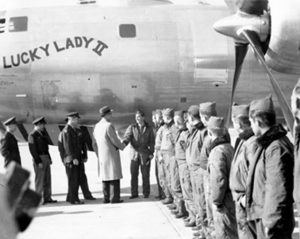 When flight first began, I seriously doubt that anyone had any idea how far it would go. Many people said, “If God had wanted us to fly, He would have given us wings!” Of course, wings can be added…if you know how to add them. The Wright brothers figured out how to add those wings, and how to make them fly. Nevertheless, any kind of long distance fight was still far in the future, back then.
When flight first began, I seriously doubt that anyone had any idea how far it would go. Many people said, “If God had wanted us to fly, He would have given us wings!” Of course, wings can be added…if you know how to add them. The Wright brothers figured out how to add those wings, and how to make them fly. Nevertheless, any kind of long distance fight was still far in the future, back then.
Then, on July 25, 1909, Louis Blériot took off from a field in France, and flew his flimsy monoplane northward for half an hour, and landed near Dover Castle in England. The flight…at the time, daring beyond belief…caused a sensation in Britain. No one thought it could be done, and much less that a mere 40 years later, a plane would actually make a non-stop around the world trip…successfully. Nevertheless, forty years later, Captain James G. Gallagher and a 13-man crew took off from Carswell AFB, Texas, in a B-50 bomber named Lucky Lady II. Four days later they landed back at Carswell. This achievement, the first nonstop flight around the world, also stirred the public imagination.
Neither event involved a major breakthrough in technology, but each was significant for other reasons. Blériot’s flight lasted a mere 37 minutes. In several demonstration flights in France during the previous year, Wilbur Wright had stayed aloft much longer. Blériot was the first to use a combination of hand/arm-operated joystick and foot-operated rudder control, that is in use to the present day, for the basic format of aerodynamic aircraft control systems. Blériot was also the first to make a working, powered, piloted monoplane. In 1909 he became world-famous for making the first airplane flight across the English Channel.
Lucky Lady II took off from Carswell Air Force Base in Fort Worth, Texas. A B-50 Superfortress, Lucky Lady II 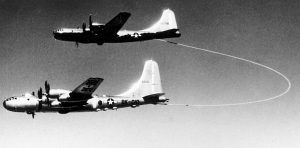 flew the first nonstop round-the-world flight. The aircraft averaged 249 miles per hour on its 23,452 mile flight. The Lucky Lady II was refueled four times in the air by B-29 tanker planes and on March 2 returned to the United States after 94 hours in the air. It was a record breaking flight. Of course, the record would not last forever. In December 1986, Voyager, a lightweight propeller plane constructed mainly of plastic, landed at Edwards Air Force Base in Muroc, California, having completed the first global flight without refueling. Flight will most likely never stop improving.
flew the first nonstop round-the-world flight. The aircraft averaged 249 miles per hour on its 23,452 mile flight. The Lucky Lady II was refueled four times in the air by B-29 tanker planes and on March 2 returned to the United States after 94 hours in the air. It was a record breaking flight. Of course, the record would not last forever. In December 1986, Voyager, a lightweight propeller plane constructed mainly of plastic, landed at Edwards Air Force Base in Muroc, California, having completed the first global flight without refueling. Flight will most likely never stop improving.
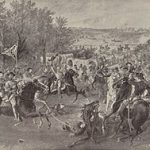
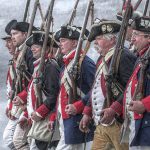 You have probably heard of the famous “Shot Heard Round the World?” It is a phrase referring to several historical incidents, the assassination of Archduke Franz Ferdinand of Austria in 1914, and particularly the beginning of the American Revolutionary War in 1775. Tensions had been mounting because colonists were frustrated as Britain forced them to pay taxes. The big problem was that they did not give them any representation in the British Parliament. The colonists were fair minded people and this flew in the face of that fairness. They rallied behind the phrase, “no taxation without representation.” The first shots rang out on the morning of April 19, 1775 in Lexington, Massachusetts.
You have probably heard of the famous “Shot Heard Round the World?” It is a phrase referring to several historical incidents, the assassination of Archduke Franz Ferdinand of Austria in 1914, and particularly the beginning of the American Revolutionary War in 1775. Tensions had been mounting because colonists were frustrated as Britain forced them to pay taxes. The big problem was that they did not give them any representation in the British Parliament. The colonists were fair minded people and this flew in the face of that fairness. They rallied behind the phrase, “no taxation without representation.” The first shots rang out on the morning of April 19, 1775 in Lexington, Massachusetts.
At the Battle of Bunker Hill, colonial officer William Prescott ordered, “Do not fire until you see the whites of their eyes!” His troops had the courage and discipline to hold their fire until the enemy was near, an early sign that the rag-tag American army had a chance at defeating the well-trained, well-armed British troops. Congress chose George Washington as commander and chief of America’s armed forces. The Battle of Saratoga was the first great American victory of the war and is widely believed to have been the turning point that led America to triumph over Britain. The Treaty of Paris was signed in 1783, and at last, Great Britain acknowledged America’s  independence. The treaty established a northern boundary with Canada and set the Mississippi River as the western boundary. In all 217,000 men took part in the war, and 4,435 lost their lives. Most people know all or at least most of this…or at least have read about it.
independence. The treaty established a northern boundary with Canada and set the Mississippi River as the western boundary. In all 217,000 men took part in the war, and 4,435 lost their lives. Most people know all or at least most of this…or at least have read about it.
However, you might not know that the Revolutionary War almost started early thanks to Sarah Tarrant, a nurse with a fiery temper who lived in Salem, Massachusetts in 1775, hurled insults at the retreating redcoats aimed his musket at her, and she dared him, “Fire, if you have the courage, but I doubt it.” No shots were fired, and the British, having found no weapons, left the town. Had he shot her, the war would have started earlier than it did.
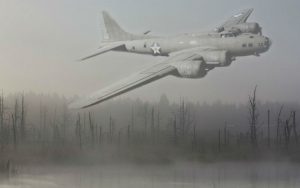
 The Swamp Ghost began its very short career on December 6, 1941, one day before the Japanese attacked Pearl Harbor. The Swamp Ghost started out as B-17 Flying Fortress, 41-2446 (which is not a tail number, and indicated that the plane was a new purchase) and under that number it was delivered to the United States Army Air Forces (USAAF). Eleven days later, the bomber departed California for Hickam Field in Pearl Harbor, Hawaii. The plane and her crew were based at Wheeler Field in Wahiawa for a very short time, and flew patrol missions for the Navy until February 1942, when the Japanese Troops invaded Rabaul on New Britain and established a base. Of course, this was a threat to the rest of New Guinea and Australia. In response to the invasion, 41-2446 was ordered to Garbutt Field, Townsville, in Queensland, Australia. Swamp Ghost’s crew included Pilot Captain Frederick C. “Fred” Eaton, Co-Pilot Captain Henry M. “Hotfoot” Harlow, Navigator 1st Lieutenant George B. Munroe Jr, Bombardier Sergeant J.J. Trelia, Flight Engineer Technical Sergeant Clarence A. LeMieux, Radio Operator/Gunner Sergeant Howard A. Sorensen, Waist Gunner Sergeant William E. Schwartz, Waist Gunner Technical Sergeant Russell Crawford, and Tail Gunner Staff Sergeant John V. Hall. The only crew change would be Sergeant Richard Oliver, who replaced Bombardier Trelia after he became ill.
The Swamp Ghost began its very short career on December 6, 1941, one day before the Japanese attacked Pearl Harbor. The Swamp Ghost started out as B-17 Flying Fortress, 41-2446 (which is not a tail number, and indicated that the plane was a new purchase) and under that number it was delivered to the United States Army Air Forces (USAAF). Eleven days later, the bomber departed California for Hickam Field in Pearl Harbor, Hawaii. The plane and her crew were based at Wheeler Field in Wahiawa for a very short time, and flew patrol missions for the Navy until February 1942, when the Japanese Troops invaded Rabaul on New Britain and established a base. Of course, this was a threat to the rest of New Guinea and Australia. In response to the invasion, 41-2446 was ordered to Garbutt Field, Townsville, in Queensland, Australia. Swamp Ghost’s crew included Pilot Captain Frederick C. “Fred” Eaton, Co-Pilot Captain Henry M. “Hotfoot” Harlow, Navigator 1st Lieutenant George B. Munroe Jr, Bombardier Sergeant J.J. Trelia, Flight Engineer Technical Sergeant Clarence A. LeMieux, Radio Operator/Gunner Sergeant Howard A. Sorensen, Waist Gunner Sergeant William E. Schwartz, Waist Gunner Technical Sergeant Russell Crawford, and Tail Gunner Staff Sergeant John V. Hall. The only crew change would be Sergeant Richard Oliver, who replaced Bombardier Trelia after he became ill.
Because of the B-17’s long flying range, the Japanese control of Wake Island and Guam, and the Vichy government’s armistice with the Nazi government, 41-2446 island hopped nearly 5,700 detour miles to get to Townsville. They didn’t want to take a chance on running into enemy fighters, if they could help it. On February 22, 1942, nine B-17Es of the 19th Bombing Group were scheduled to take off for Rabaul. Unfortunately, this mission seemed doomed from the start, as nothing would go quite as planned. Out of the nine aircraft, four had to completely abort the mission due to mechanical problems. To further complicate matters, bad weather conditions made it difficult to see up in the air for those who were able to takeoff. Finally, poor visibility separated the five remaining in flight.
I would like to say that was all the problems they ran into, but there’s more. When 41-2446 was to drop its payload, the bomb bay malfunctioned. The crew had to go around for a second pass, where they managed a clear drop over their target. The Japanese were working hard to make this mission fail too. Japanese fire was intense and a flak round managed to punch a hole through the starboard wing of 41-2556. Fortunately for the crew, the wing didn’t detonate. While the crew hoped to make it to Fort Moresby, they were low on fuel. The dog-fight, had seen to that. They would have to land in New Guinea.
Captain Fred Eaton thought he was setting down the bomber in a wheat field, however, they actually landed wheels-up in the middle of Agaiambo swamp. The only good news in this horrific failure of a mission was that the crew was unscathed, except for one with minor cuts and scrapes. Now, they still had to get out of the swamp. It took two days of hacking their way through the razor-sharp kunai grass for the men to reach dry land. They ran into some locals who were chopping wood. The locals took them, horribly bitten by mosquitos and infected with malaria, to their village. After a night of rest, they traveled downriver in canoes, where they were handed over to an Australian magistrate, and eventually arrived at Port Moresby on April 1…thirty six days after their crash. After a week in the hospital, the men returned to combat, but their plane did not. After 41-2446’s crash, Captain Fred Eaton flew 60 more missions. Whenever these missions would take him over the crash site, he would circle it and tell his new crewmembers the story of what happened. I suppose it was therapeutic to re-live the amazing escape from the Agaiambo swamp. This was where the plane’s legend was born. After Eaton returned home, 41-2446 slipped from the public eye for nearly three decades.
Then, in 1972, some Australian soldiers happened upon the crash. After spotting the wreckage from a helicopter, they landed on the aircraft’s wing and found the plane semi-submerged, and strangely intact. The machine guns were in place, and even the coffee thermoses were intact. They nicknamed the plane, Swamp Ghost, and the name stuck. Thanks to warbird collector Charles Darby who included dozens of photographs in his book, Pacific Aircraft Wrecks, word spread in 1979 . Once the fad of recovering World War II aircraft really took off. Trekkers hiked into the site and began stripping the aircraft for keepsakes and sellable items. Despite the stripping, the aircraft structure itself remained remarkably intact, until it was removed from the swamp.
Alfred Hagen, a pilot and commercial builder from Pennsylvania, set his sights on Swamp Ghost and wanted to take it free it from the disintegration of the swamp. In November 2005, he obtained an export permit for the 
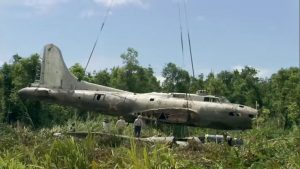 B-17 for $100,000. For four weeks they labored over the aircraft, dismantling it in order to ship it out of the country. The controversy over its removal halted the cargo before it could be shipped to the United States. Eventually, it was cleared for import and by February 2010 it arrived at the Pacific Aviation Museum at Pearl Harbor for display.
B-17 for $100,000. For four weeks they labored over the aircraft, dismantling it in order to ship it out of the country. The controversy over its removal halted the cargo before it could be shipped to the United States. Eventually, it was cleared for import and by February 2010 it arrived at the Pacific Aviation Museum at Pearl Harbor for display.
 Gunner was a stray male Kelpie, born in August 1941, who became notable for his reliability to accurately alert Allied Air Force personnel that Japanese aircraft were approaching Darwin during the Second World War. Gunner was six months old when he was found whimpering under a destroyed mess hut at Darwin Air Force base where he suffering a broken leg on February 19, 1942, following the first wave of Japanese attacks on Darwin.
Gunner was a stray male Kelpie, born in August 1941, who became notable for his reliability to accurately alert Allied Air Force personnel that Japanese aircraft were approaching Darwin during the Second World War. Gunner was six months old when he was found whimpering under a destroyed mess hut at Darwin Air Force base where he suffering a broken leg on February 19, 1942, following the first wave of Japanese attacks on Darwin.
Gunner was taken to a field hospital, but the doctor insisted he could not fix a “man” with a broken leg without knowing his name and serial number. The doctor repaired and plastered his leg after the air force personnel replied that his name was “Gunner” and his number was “0000”. Gunner entered the airforce on that day. It might have been unofficial, but only is the way he was “drafted.” Gunner’s Air Force career was very real. Leading Aircraftman Percy Westcott, one of the two airmen who found Gunner, took ownership of him and became his master and handler. Gunner was badly shaken after the bombing and quite skittish, but being only six months old he quickly responded to the attention of the men on base.
About a week later, Gunner first demonstrated his remarkable hearing skills. The men were working on the airfield, when Gunner became agitated. He started to whine and jump. A little while later, the sound of approaching airplane engines was heard by the airmen. Suddenly, a wave of Japanese raiders appeared in the skies above Darwin and began bombing and strafing the town. Somehow…Gunner knew. Two days later, Gunner became agitated again, and not long afterwards came another air attack. In the months that followed, the same pattern played out every time an attack occurred. Long before the sirens sounded, Gunner would become agitated and head for shelter. Because of Gunner’s amazing hearing he was able to warn air force personnel of approaching Japanese aircraft up to 20 minutes before they arrived and before they showed up on the radar. Gunner was never agitated when he heard Allied planes taking off or landing….just the enemy aircraft. Somehow Gunner could differentiate the sounds of Allied and enemy aircraft. He was so reliable that Wing Commander McFarlane gave approval for Westcott to sound a portable air raid siren whenever Gunner’s 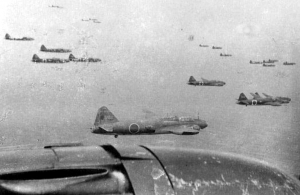 whining or jumping alerted him. Before long, there were a number of stray dogs roaming the base. McFarlane gave the order that all dogs be shot, with the exception of Gunner. They couldn’t afford any distractions.
whining or jumping alerted him. Before long, there were a number of stray dogs roaming the base. McFarlane gave the order that all dogs be shot, with the exception of Gunner. They couldn’t afford any distractions.
Gunner became such a part of the air force that he slept under Westcott’s bunk, showered with the men in the shower block, sat with the men at the outdoor movie pictures, and went up with the pilots during practice take-off and landings. When Westcott was posted to Melbourne 18 months later, Gunner stayed in Darwin, looked after by the RAAF butcher. It is unknown what happened to Gunner after the war, but he was a most amazing dog.
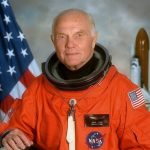
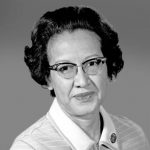 Most of us who were around in the 1960s, know about the early space program, and especially the very first American to orbit the Earth…John Glenn. John Glenn’s historic flight put the United States on the map of the space race, so to speak. It all seems very commonplace in this day and age of space shuttles, and the International Space Station, but the reality was that this first American orbit could have ended tragically.
Most of us who were around in the 1960s, know about the early space program, and especially the very first American to orbit the Earth…John Glenn. John Glenn’s historic flight put the United States on the map of the space race, so to speak. It all seems very commonplace in this day and age of space shuttles, and the International Space Station, but the reality was that this first American orbit could have ended tragically.
While some change had happened concerning blacks and women, there was still much that had not changed. Women were not viewed as mathematically inclined, and black women even less so. That was before they knew about Katherine Johnson. Katherine Johnson was handpicked to be one of three black students to integrate West Virginia’s graduate schools. Born in White Sulphur Springs, West Virginia in 1918, her intense curiosity and brilliance with numbers vaulted her ahead several grades in school. She graduated from high school at the age of 14, and the historically black West Virginia State University at 18, where she had made quick work of the school’s math curriculum. Katherine graduated with highest honors in 1937 and took a job teaching at a black public school in Virginia, but this was not to be her career.
In 1935, the NACA (National Advisory Committee for Aeronautics, a precursor to NASA) hired five women to be their first computer pool at the Langley campus. “The women were meticulous and accurate…and they didn’t have to pay them very much,” NASA’s historian Bill Barry says, explaining the NACA’s decision. Six months later, after the attack on Pearl Harbor brought the United States into World War II, NACA and Langley began recruiting African-American women with college degrees to work as human computers.
Johnson was hired by NACA in 1953. Johnson, along with Dorothy Vaughan, and Mary Jackson, became part of NASA’s team of human computers. These people were mathematicians who performed the necessary calculations to make space flight possible in a time when “machine computers” didn’t exist, or were very new. Johnson was perfect for this job. After working for Nasa a while, and really proving her worth, Johnson was still running into road blocks. When NASA engineer Paul Stafford was preparing a meeting about John Glenn’s upcoming mission. Johnson felt that she needed to be at that meeting to explain her numbers, but Stafford refused her the request to attend stating, “There’s no protocol for women attending.” Johnson instantly replied, “There’s no protocol for a man circling Earth either, sir.”
Johnson saw an opportunity when NASA installed huge IBM computers…that no one knew how to use. They tried to get the machines set up so that the human computers could be replaced by the far more accurate machines, but the set up proved too difficult, until Johnson taught herself to use the machines. She then taught the rest of the black women, human computers to run them too. In the end, they were the only ones who knew how to do it. It made them much more important to the space program. The men had to face the fact that the women, that they had all but discounted, were going to be the ones to save the space program.
The biggest highlight of Katherine Johnson’s career came at the point when John Glenn was getting ready to  make that historic first orbit around the Earth. Johnson’s main job in the lead-up and during the mission was to double-check and reverse engineer the newly-installed IBM 7090s trajectory calculations. There were very tense moments during the flight that forced the mission to end earlier than expected. John Glenn requested that Johnson specifically check and confirm trajectories and entry points that the IBM put out. Glenn didn’t completely trust the computer. So, he asked the head engineers to “get the girl to check the numbers…If she says the numbers are good…I’m ready to go.” Johnson couldn’t have been given a greater seal of approval than to have John Glenn say that she was the only one he trusted…after all, it was his life.
make that historic first orbit around the Earth. Johnson’s main job in the lead-up and during the mission was to double-check and reverse engineer the newly-installed IBM 7090s trajectory calculations. There were very tense moments during the flight that forced the mission to end earlier than expected. John Glenn requested that Johnson specifically check and confirm trajectories and entry points that the IBM put out. Glenn didn’t completely trust the computer. So, he asked the head engineers to “get the girl to check the numbers…If she says the numbers are good…I’m ready to go.” Johnson couldn’t have been given a greater seal of approval than to have John Glenn say that she was the only one he trusted…after all, it was his life.
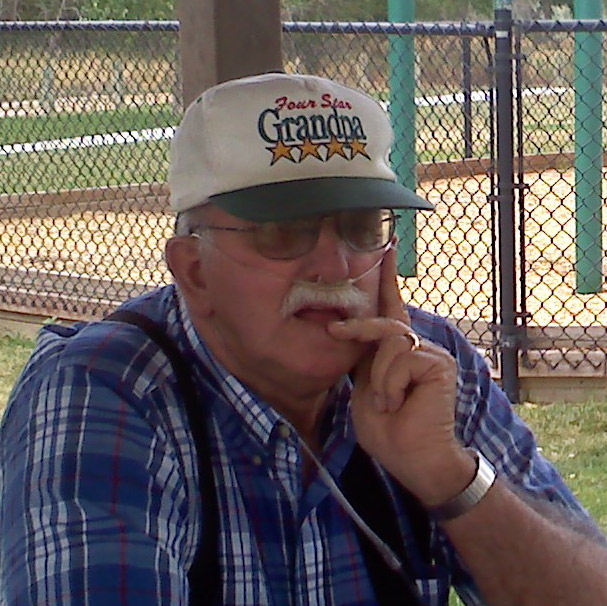 My Uncle Jack McDaniels was always a great guy…very pleasant and always ready with a joke of some other funny remark. All my life, I enjoyed being around him and my Aunt Bonnie. Uncle Jack went home to Heaven on July 14, 2012, and he has been greatly missed by his family ever since. As I was getting ready to write his birthday story, I wanted to capture his personality in a way that maybe many people did not know him, so I contacted his daughter-in-law, Deena for assistance. I like to think that my inquiry gave Deena and Michael a prime opportunity to remember his dad on his birthday, because what better way to remember a parent than happy memories discussed on their birthday.
My Uncle Jack McDaniels was always a great guy…very pleasant and always ready with a joke of some other funny remark. All my life, I enjoyed being around him and my Aunt Bonnie. Uncle Jack went home to Heaven on July 14, 2012, and he has been greatly missed by his family ever since. As I was getting ready to write his birthday story, I wanted to capture his personality in a way that maybe many people did not know him, so I contacted his daughter-in-law, Deena for assistance. I like to think that my inquiry gave Deena and Michael a prime opportunity to remember his dad on his birthday, because what better way to remember a parent than happy memories discussed on their birthday.
If you have ever been a part of a family on the larger side of size, you know that when they all get together, especially when there are little children in the mix, it is not a quiet event. Michael remembered a large family gathering that was quite loud, as you can imagine. Suddenly, everything went still…how that many people would all get quiet at the same time is shocking enough in and of itself. Nevertheless, for a few moments all was quiet before someone finally spoke. Uncle Jack said, in relief, “Thank goodness, I thought I had gone deaf!” I can absolutely see my Uncle Jack saying just that, with a twinkle in his eye, because that is how he was. He always saw the humor in life.
Uncle Jack and Aunt Bonnie’s son, Michael married his wife, Deena in 2006, so Deena got to know Uncle Jack for a little over six years. Deena told me about her first real interaction with Uncle Jack. Michael, having grown up with his dad’s influence, made the joke that he found Deena by the side of the road. So, when Uncle Jack met Deena for the first time, he said “So, you must be the hitchhiker!!!” The nickname stuck, and she is the hitchhiker to this day. It was all part of his teasing nature.
One thing I didn’t know, but wished I did, is that Uncle Jack loved local history. It is something he shared with Michael and Deena. Conversations between the three of them often centered around Casper and Natrona 
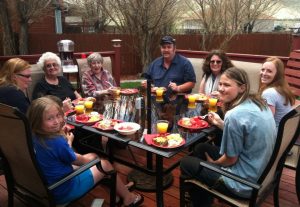 County history. They all collect books on local history too. Uncle Jack would share his collection of books with us, and their love of history grew. Books on local history became popular gifts for birthdays and Christmas, and I’m sure they are extra special treasures, now that Uncle Jack is in Heaven, as are the wonderful conversations they had over the years. Today would have been Uncle Jack’s 81st birthday. Happy birthday in Heaven, Uncle Jack. We all love and miss you very much.
County history. They all collect books on local history too. Uncle Jack would share his collection of books with us, and their love of history grew. Books on local history became popular gifts for birthdays and Christmas, and I’m sure they are extra special treasures, now that Uncle Jack is in Heaven, as are the wonderful conversations they had over the years. Today would have been Uncle Jack’s 81st birthday. Happy birthday in Heaven, Uncle Jack. We all love and miss you very much.
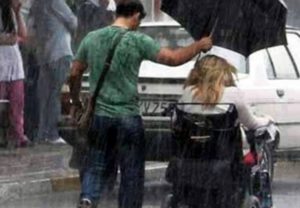 I think most of us try to be nice people. We try to do nice things for our friends and loved ones, but what about random acts of kindness for people we don’t know. Most of us really put those things on the back burner, so to speak. It is probably a sad thing that there has to be a day set aside for random acts of kindness, but maybe we all need a reminder once in a while. There are always people who are less fortunate than we are…no matter how bad off we think we are. Most people think that random acts of kindness need to include money, but that isn’t so. The needs of those around us are not always monetary. Sometimes, people simply need a smile at the right moment, because they are feeling down. Other times, money is the need, of course. I think the key is to be aware, and to listen to your own spirit when it comes to hearing about the needs of those around you. If you feel led to do something for someone, act
I think most of us try to be nice people. We try to do nice things for our friends and loved ones, but what about random acts of kindness for people we don’t know. Most of us really put those things on the back burner, so to speak. It is probably a sad thing that there has to be a day set aside for random acts of kindness, but maybe we all need a reminder once in a while. There are always people who are less fortunate than we are…no matter how bad off we think we are. Most people think that random acts of kindness need to include money, but that isn’t so. The needs of those around us are not always monetary. Sometimes, people simply need a smile at the right moment, because they are feeling down. Other times, money is the need, of course. I think the key is to be aware, and to listen to your own spirit when it comes to hearing about the needs of those around you. If you feel led to do something for someone, act  upon that leading, using the appropriate amount of caution of course, because not everyone is nice.
upon that leading, using the appropriate amount of caution of course, because not everyone is nice.
Sometimes random acts of kindness should be anonymous too. I think that applies to most of the time. There is no need for recognition with random acts of kindness. In fact, that is the point of a random act of kindness, to remain anonymous…and even if they see you, they don’t have to know your name. All they have to know is that someone cared enough to do something nice for them. The thing that I always find to be true is that invariably, the person you choose to do something nice for, really needed to know that someone cared right then. We always think that we could not possibly know who needed our help, but I think that there are always telltale signs…even if it is just a feeling we have inside.

I suppose that sometimes, a random act of kindness can bless someone who, for all intents and purposes, doesn’t need any such act of kindness. Maybe there is nothing lacking in their life. Still, can a kindness shown ever be wasted? I don’t think so, because who could need a random act of kindness more than someone who thinks that they only have themselves to count on. We all know people who “don’t need any help” from anyone. To me, that is the saddest of all, because, as the saying goes, “no man is an island.” So today, if you have the chance to, show someone a random act of kindness, and maybe it could become a habit for every day.

